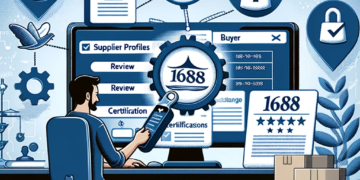HubSpot CRM can be decoded as a Customer Relationship Management System. It consolidates marketing, sales, content and service tools in one place, allowing teams to access customer data, plan tasks, and improve communication.
Let’s examine more closely what exactly HubSpot CRM does and how it can simplify day-to-day business operations.
Key features and benefits of HubSpot CRM
1. Contact and Lead Management
HubSpot provides a central contact database, and effective HubSpot CRM implementation services are crucial for maximizing its potential. It tracks interactions across email, phone, social media, and meetings. Businesses can segment contacts by behavior, company size, or industry.
Here’s how this helps:
- You don’t need to dig through multiple tools to find contact history.
- Sales and support teams can view the full timelines of past conversations.
- You can sort contacts into lists to send tailored content or offers.
Free accounts can store up to 1 million contacts, with no time limit on the data. This makes it a good choice for growing businesses with limited budgets.
2. Sales Pipeline and Deal Tracking
You can build your own sales pipeline inside HubSpot. Every deal has a stage, and you move deals as progress happens. The view is visual — think columns on a board — so it’s easy to see what’s open, what’s won, and what’s stalled.
Useful in practice:
- Custom stages mean the system adapts to how you sell.
- Set automatic reminders for each stage.
- Track why deals are lost or delayed and take action.
By providing a clear visual representation of the sales pipeline, HubSpot enables quick identification of inefficiencies. This helps managers see bottlenecks and reps focus on what matters.
3. Email Tracking and Automation
With HubSpot, you know when someone opens your email. You also get alerts for link clicks and replies. This allows teams to follow up at the right moment.
How it works daily:
- Set up sequences that send pre-written emails on a schedule.
- Use templates to reply faster.
- Measure what content works with A/B testing.
HubSpot’s real-time email engagement data enables sales teams to prioritize high-potential leads, streamlining their workflow and eliminating unnecessary effort.
4. Calendar Integration and Meeting Booking
You can connect Google or Outlook calendars with HubSpot. This lets customers book time using a link. It syncs with your availability in real-time.
Why it matters:
- No more back-and-forth emails to schedule meetings.
- Forms collect basic info before the call.
- It automatically creates CRM records.
By automating the scheduling process, HubSpot eliminates manual coordination and reduces the risk of double-booking. This saves time and keeps your calendar under control.
5. Live Chat and Chatbots
Visitors can chat with your team directly on your site. If no one is available, bots can handle simple questions or book meetings.
Practical benefits:
- Capture leads from chat sessions.
- Route chats to the right person based on the topic.
- Provide 24/7 support for basic issues.
This direct line of communication adds to the interaction and lead generation from your website. In most other CRMs, chat tools are not included in free accounts, but it is with HubSpot CRM.
If you are interested in learning more about automation solutions, you can contact Routine Automation. We’ll be happy to help.
6. Task and Activity Management
You can delegate tasks to team members and manage deadlines. HubSpot’s reminder system assists users in keeping up with meetings, emails, and calls.
Day-to-day use:
- Set task queues by priority.
- Log calls with one click.
- Get reminders inside your inbox or app.
By centralizing task management within the CRM, HubSpot eliminates the need to switch between different applications, improving efficiency. This keeps your team organized without needing extra tools.
7. Reporting and Analytics
HubSpot includes dashboards to track everything — sales activity, email performance, deal stages, and more. Reports are visual and easy to share.
You can:
- Monitor sales rep performance.
- Check which emails are getting clicks.
- Spot trends in lead sources.
You don’t need a data analyst. Most reports can be set up with drag-and-drop tools.
8. CMS and Content Tools
The platform includes a content management system. You can build landing pages, blogs, and full websites. SEO tools help optimize content for search engines.
How this helps:
- Create pages with drag-and-drop tools.
- Use smart content blocks for personalization.
- Preview content in multiple languages and devices.
This is helpful if you want a basic website without hiring developers.
9. Customer Support Features
HubSpot also includes support tools like ticketing, live chat, and a knowledge base. You can create help articles and collect customer feedback with surveys.
Real-world impact:
- Customers get faster responses.
- Agents can track open issues and follow up.
- Managers see where support requests get stuck.
By providing comprehensive support metrics and tracking, HubSpot facilitates detailed analysis of customer interactions. This gives you visibility into how your team helps customers.
Summing up…
HubSpot CRM is not just for marketers or salespeople. It’s designed for anyone who works with customers. You get one system to store contacts, track tasks, send emails, book meetings, and analyze results.
It’s free to start, and the tools are useful even before you upgrade. For many businesses, that’s enough to improve how their teams work every day.
David Prior
David Prior is the editor of Today News, responsible for the overall editorial strategy. He is an NCTJ-qualified journalist with over 20 years’ experience, and is also editor of the award-winning hyperlocal news title Altrincham Today. His LinkedIn profile is here.














































































